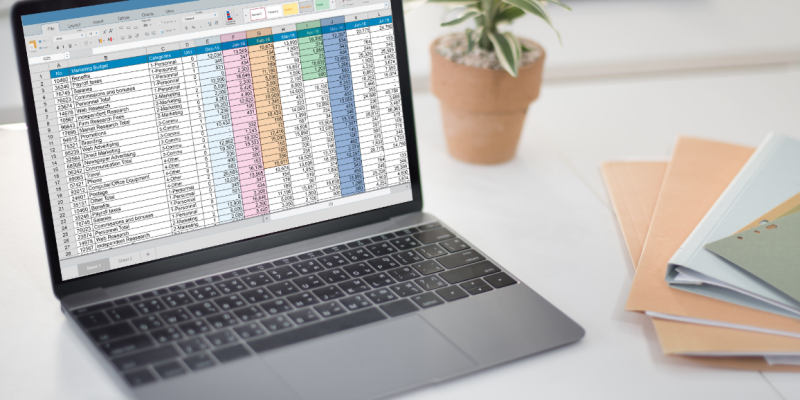Studies have shown that a whopping 82% of jobs require at least some Excel knowledge. Clearly, knowledge of the software is essential to success in the current job market.
Luckily, you don’t need to be a tech whiz to impress your superiors with your knowledge of Excel. With a few simple Excel tricks and tips, you’ll be able to navigate the software with ease. Read on to learn every Excel trick you need to know.
Contents
Every Basic Excel Trick, Explained
The two basic tricks you need to know are Excel formulas and functions. By mastering these simple operations, you’ll be able to easily navigate your table and save time when making calculations.
Excel Formulas
When scripting Excel formulas, you’ll always want to include an equal sign (“=“) as the first character in the cell.
To find the sum of two or more cells, you can use a plus sign (for example, “=C6+F2“).
To find the difference of two or more cells, you can use a minus sign (for example, “=C6-F2“).
To multiply two or more cells together, use an asterisk (for example, “=C6*F2“).
To divide two or more cells, use the slash character (for example, “=C6/F2“).
For more complex formulas (e.g., using several of these operations within one cell), you’ll have to remember the order of operations. You may have learned this as PEMDAS (parenthesis, exponents, multiplication, division, addition, subtraction) in school.
Excel Functions
Also important are Excel functions. These differ slightly from formulas as they automate the operations you would normally use within a formula. Here are some of the most common functions.
Use the SUM function to automatically add a range of cells (for example, “=SUM(C6:C10)“).
Use the AVERAGE function to average out a range of values across multiple cells (for example, “=AVERAGE(C6:C10)“).
Use the IF function to return values based upon a logical test (essentially, a mathematical true or false test). For example, the syntax would look something like this: “=IF(C6>C10, “Over Budget”, “Within Budget”).”
Use the VLOOKUP function to search within your sheet. It will look something like this: “=VLOOKUP(lookup value, table array, column number, Approximate match (TRUE) or Exact match (FALSE)).”
These functions will be useful in navigating your table and creating shortcuts.
How to Get Good at Excel and Other Microsoft Tools
Excel isn’t the only Microsoft tool employers often request. Knowledge of Microsoft tools like Word, Excel, and PowerPoint is extremely useful for almost any field.
When it comes to using Office 365 tools, it’s important to know your way around the software. Luckily, there’s an abundance of free resources you can use to learn how to do so. After mastering the basic tricks, consider diving deeper into learning how to use Excel and other Office 365 tools.
Putting Your Skills to Use
Now that you’ve learned every basic Excel trick you’ll need to know, you’re ready to add the skill to your resume with confidence. Use your new skills to save time, impress bosses, and more.
Whether you use spreadsheets for personal finance or organization at work, learning how to use Excel is extremely useful. You can also transfer the knowledge to other spreadsheet programs like Google Sheets.
For more tips and tricks, check out our Tech section for the latest information.
